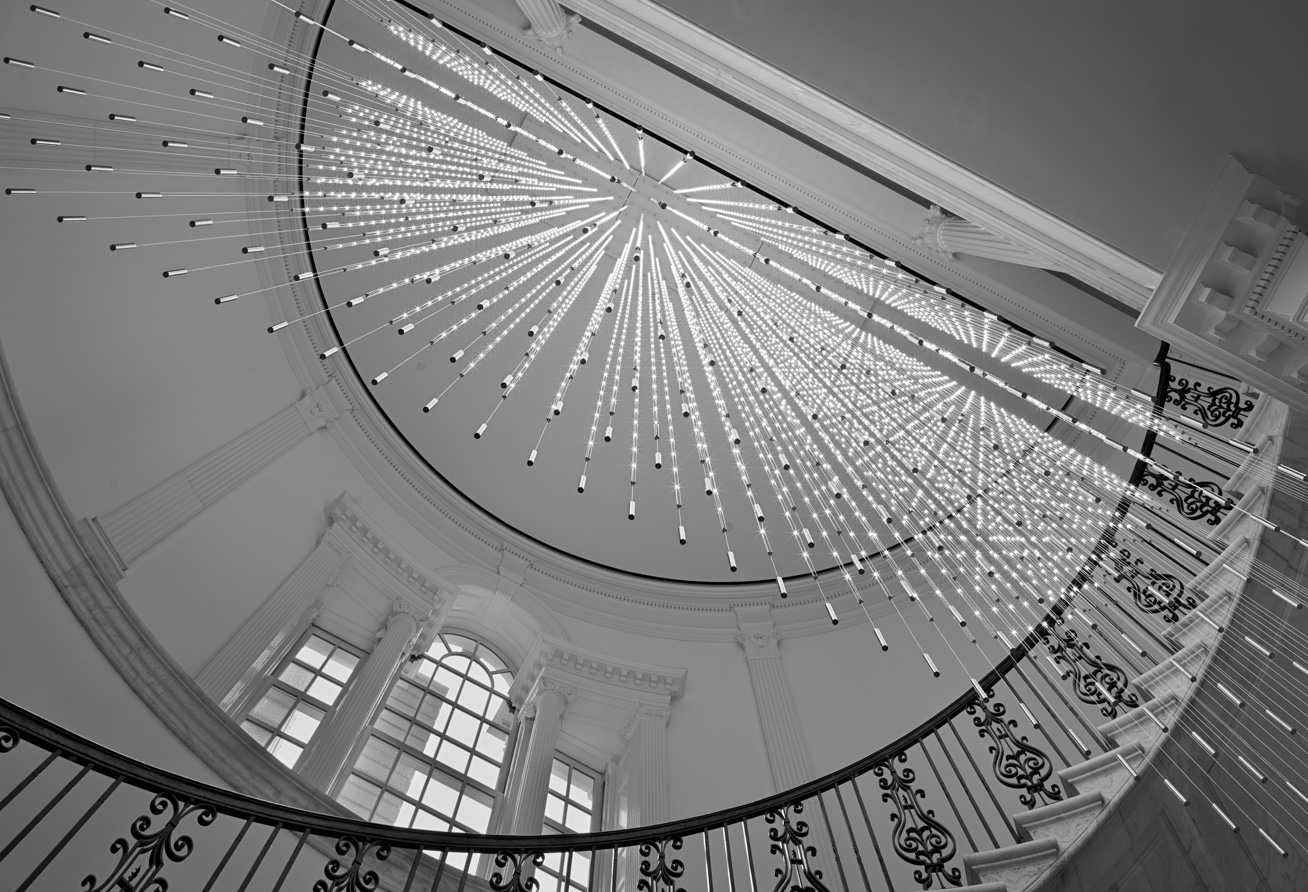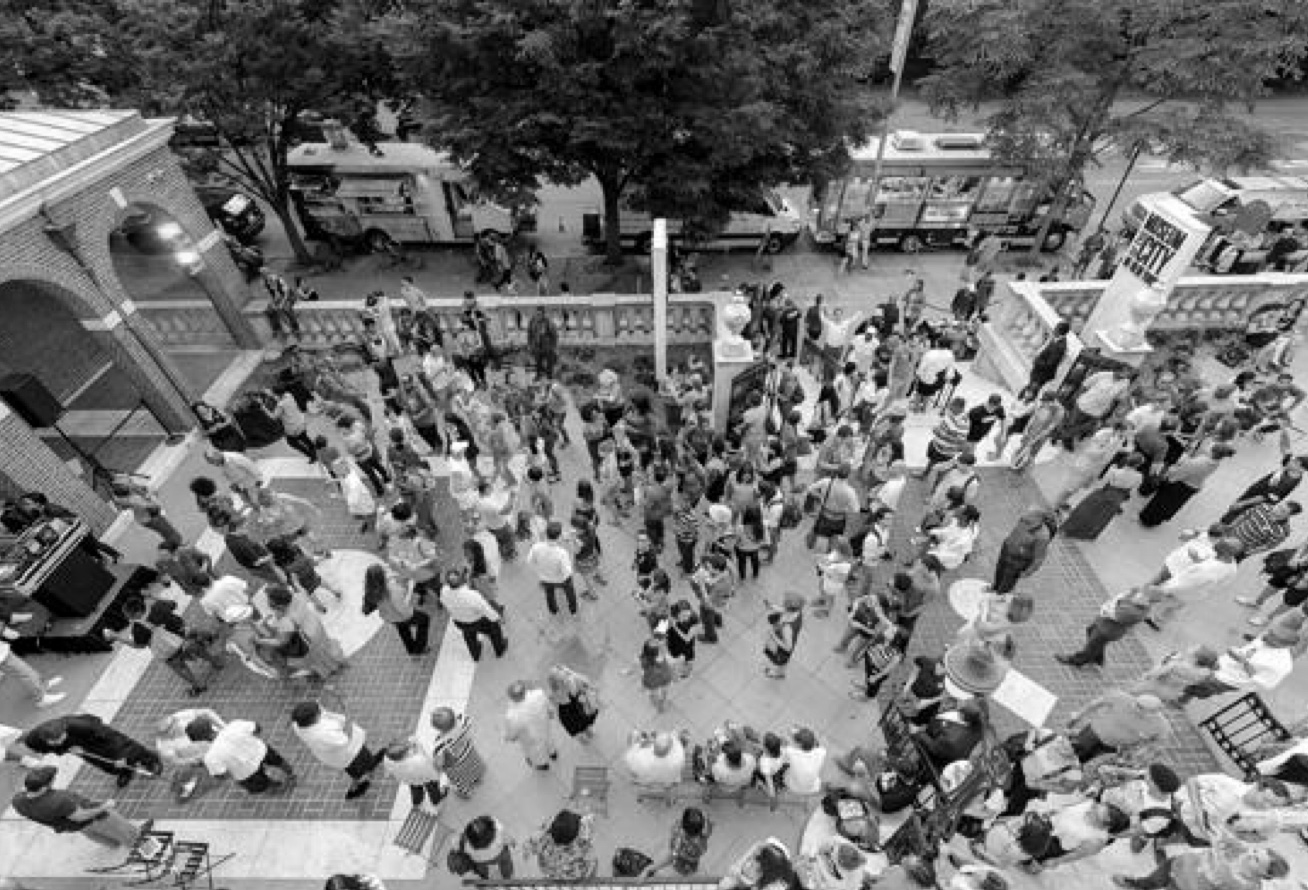Nativists and Immigrants
'Beware of Foreign Influence'
1830-1860
Ongoing

Back to Exhibitions
Between 1820 and 1860, 3.7 million immigrants landed in New York Harbor—at a time when the city’s population numbered less than one million. No laws existed to regulate or curtail the flow of newcomers. Economic and political unrest propelled people across the Atlantic, including more than half a million Irish fleeing famine from 1845-1851.
As the largest port on the eastern seaboard in the 19th century, New York became the main point of entry for European immigrants. It also became a center of anti-immigration, or “nativist,” sentiment.
In 1835, New Yorker Samuel F. B. Morse and others created the first political party against immigration, the Native American Democratic Association. Other nativist activists formed clubs and political parties in the 1840s and 1850s that sought to lengthen the period before new arrivals could become citizens, vote, or hold public office, and to pass laws that protected Americans from immigrants competing for their jobs.
Irish and German Catholics were singled out for their religious practices and political views, in particular their perceived devotion to the Pope and the Vatican.
Immigrant men and women mobilized against nativist sentiment and carved out their own communities in New York. In the mid-19th century, Irish-Catholic immigrants created their own organizations and gained municipal political power, helping to shape the city and redefine who was American. But nativism did not disappear. Federal immigration laws of the 1920s established a quota system to limit the number of newcomers based on country of origin that lasted until 1965.
Meet the Activists
Thomas Nast


Thomas Nast
Thomas Nast was the most well-known cartoonist of the second half of the 19th century. A German Protestant immigrant and Radical Republican, he refused to draw cartoons that did not match his political sensibilities. Nast’s most famous cartoons decried the corruption of Tammany Hall. Although not a nativist, Nast frequently lambasted the idea of separate Catholic schools in the pages of Harper’s Weekly.
Image Info: Sarony & Co., 1866-1871, Museum of the City of New York, Portrait Archives, F2012.58.966.
John Hughes


John Hughes
Irish immigrant John Hughes became Archbishop of New York in 1850. Known as “Dagger John,” Hughes presided over a period of increased power of the Catholic Church in New York by working to unite parishes across the city. He also encouraged the formation of fraternal organizations to help new immigrants and Catholic schools.
Image Info: Currier & Ives, 1865, Museum of the City of New York, 57.100.13.
Samuel F. B. Morse


Samuel F. B. Morse
New York activists like inventor and Native American Democratic Association co-founder Samuel F. B. Morse blamed the city’s immigrants for the poverty and crime that plagued the growing slums. In Morse’s words, foreigners were “filthy and ragged in body, ignorant in mind… they fill your streets with squalid beggary, and your highways with crime.”
Image Info: 1840, Museum of the City of New York, Gift of Miss Leila Livingston Morse, 36.55.6.
Objects & Images
Beaker Engraved With Anti-jacobite Verses


Beaker Engraved With Anti-jacobite Verses
Nativists built on a long tradition of anti-Catholic sentiment in New York. Colonial New Yorkers paraded through the streets on “Pope’s Day” (November 5) burning effigies of the pope, the devil, and the “Pretender” (the Catholic Charles Edward Stuart, who sought the English crown). This beaker depicts this theme.
Image Info: Hugues Lossieux, St. Malo, France, 1707; engraved by Joseph Leddel, New York, ca. 1750, Silver, Museum of the City of New York, Museum Purchase, 76.79.
Charles Parsons, United Americans Of The State Of New York


Charles Parsons, United Americans Of The State Of New York
This image is from a membership certificate for a nativist secret society originally called the American Brotherhood and founded in New York City in 1844 to “oppose foreign influence in [American] institutions or government.” Emerging locally in New York and other cities, these parties spread across the country in the 1840s and 1850s.
Image Info: Printed by G. & W. Endicott, ca. 1848, Courtesy Library of Congress, Prints & Photographs Division, LC-DIG-pga-06308.
Nativist Flag


Nativist Flag
This flag was carried in New York’s Native American Procession of 1844, when the party’s nominee, publisher James Harper, won the mayoral election. The flag depicts an eagle above a ballot box labeled “Twenty-One Years,” the length of time nativists wanted immigrants to wait before earning citizenship and voting rights.
Image Info: 1844, Courtesy New-York Historical Society.
James Harper Esq., Mayor Of New York City


James Harper Esq., Mayor Of New York City
New York nativists elected publisher James Harper mayor in 1844. Harper barred immigrants from city jobs but did not succeed in curtailing voting rights for the foreign-born.
Image Info: May 28, 1844, Courtesy Library of Congress, Prints & Photographs Division, LC-DIG-pga-07640.
Five Points, 1827


Five Points, 1827
Nativists pointed to the crowded Five Points neighborhood in Lower Manhattan as a vivid example of everything they feared immigration would bring to New York: poverty, violence, intemperance, crime, sexual vice, and racial mixing.
Image Info: D.T. Valentine’s Manual, 1855, Lithograph (after a painting by George Catlin), Museum of the City of New York, Print Archives, 97.227.3.
Maria Monk/father Phelan/baby Phelan


Maria Monk/father Phelan/baby Phelan
New York became a center for publishing anti-Catholic tracts, broadsides, and books appealing to an emerging mass market for sensationalist literature. In 1836, ex-nun Maria Monk published an account of life in a Montreal convent. Although investigators determined it was a hoax, Monk’s charges of sexual misconduct made her book a bestseller and incited anti-Catholic activism.
Image Info: Alfred M. Hoffy, ca. 1836, Museum of the City of New York, Museum purchase, 95.54.12.
Napoleon Sarony, A Democratic Voter


Napoleon Sarony, A Democratic Voter
Nativists charged that poor Irish immigrants would undermine the Republic by selling their votes to the highest bidder—in this case, competing factions (“Tammany” and “Locofoco”) of the city’s Democratic Party. As printing technology improved, political cartoons such as these proliferated.
Image Info: Published by Henry R. Robinson, New York, ca. 1836, Lithograph, Courtesy Library of Congress Prints and Photographs Division, LC-USZ62-21236.
The Result Of The Immigration From China


The Result Of The Immigration From China
Nativists drew on 19th-century ideas that tied certain physical traits to character and often portrayed immigrants as racially inferior. Intermixing between immigrant Irish women and Chinese men in 19th-century New York was commonly represented through dehumanizing stereotypes such as this one, from the New York-based magazine Yankee Notions.
Image Info: Yankee Notions, March 1858, Courtesy Boston Public Library.
Sheet Music Cover, “K N Quick Step”


Sheet Music Cover, “K N Quick Step”
Nativists used songs to stir the party faithful and spread their message. As the nation’s leading center of sheet music publication, lower Manhattan was well-equipped to serve the anti-immigrant American Party, also called the “Know Nothings,” with printings of songs such as the “K N Quick Step.”
Image Info: Published by Winner & Shuster, Philadelphia / Firth, Pond, & Co., New York, 1854, Lithograph, Courtesy Library of Congress, Prints & Photographs Division, LC-USZ62-19431.
The American River Ganges


The American River Ganges
This cartoon is considered to be one of the most searing works by Thomas Nast, the most famous political cartoonist of his era. Nast often criticized the movement for separate Catholic schools in the pages of Harper’s Weekly. Here he depicts Catholic bishops as invading reptiles targeting children with Catholic education, while New York City public schools crumble.
Image Info: Thomas Nast, Harper’s Weekly, 1871, Courtesy Library of Congress Prints and Photographs Division, LC-USZ6-790.
St. Bridget's Parochial School


St. Bridget's Parochial School
Protestants and Catholics collided over New York’s educational system beginning in the 1830s. Protestants claimed Catholicism ran counter to the democratic ideals of public education, while Catholics protested required reading of the Protestant King James Bible. By 1858, nearly 15,000 Catholic pupils attended 43 separate Catholic schools, such as St. Bridget’s Parochial School, which exists today as St. Brigid School.
Image Info: 1878, Lithograph, Museum of the City of New York, Gift of Harry Shaw Newman, 46.415.
Key Events
| Global | Year | Local |
|---|---|---|
|
|
1777 | New York’s new state constitution allows freedom of religion |
| 1786 |
The city’s first Catholic church, St. Peter’s, opens |
|
| End of Napoleonic Wars and of the War of 1812 usher in new era of immigration to America | 1815 |
|
|
|
1835 |
Samuel F. B. Morse and other New York Protestants form the Native American Democratic Association |
| Irish potato famine begins, sets off wave of new immigration | 1845 |
|
| American (“Know-Nothing”) Party founded | 1853 | |
| 1855 | Over 50% of New York City residents are immigrants | |
| Chinese Exclusion Act is passed to stop Chinese immigrants from entering or remaining in the country | 1882 |

